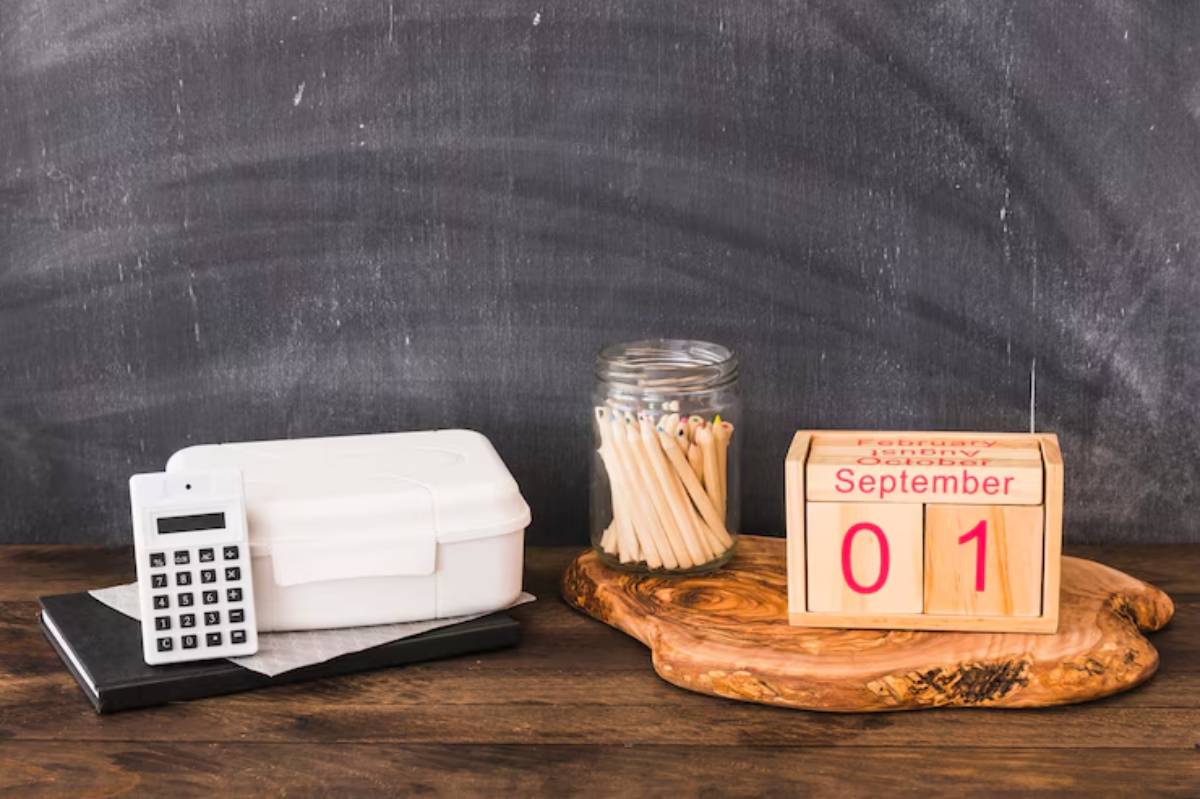The Education Blog

How to Create a Daily Time Management Plan That Sticks
Ever felt like your days vanish before you’ve achieved anything meaningful? You start with good intentions — maybe even a to-do list — and suddenly it’s midnight, with half your tasks untouched. For students, balancing schoolwork, social life, part-time jobs, and personal time can feel like juggling flaming torches on a tightrope.
Creating a daily time management plan that sticks isn’t about packing every minute. It’s about making smart choices with your time. Build a daily routine that matches your goals, energy, and long-term success.
In this expert guide, you’ll learn how to create a practical and sustainable schedule. We’ll use proven techniques, real-world insights, and a step-by-step system that really works.
Understanding the Core: What Is a Daily Time Management Plan?

A daily time management plan helps you use your hours wisely. It divides your time among important tasks: academic, personal, social, and restorative. It’s not rigid micromanagement. Rather, it’s a blueprint to help you stay grounded, productive, and mentally energised.
Why is it essential for students?
A 2023 study by the British Psychological Society found that students who plan their days do 20% better in school. They also feel much less stressed than those who don’t plan. A good time planning guide helps you meet deadlines. It also prevents burnout, boosts motivation, and builds discipline.
Step-by-Step Guide: How to Create a Daily Time Management Plan That Sticks
1. Audit Your Current Time Habits
Before adding anything new, observe what’s already happening. Over a few days, jot down how you actually spend your time — from morning routines to unplanned scrolling sessions.
Key questions to ask:
- Where do you lose time?
- When are your most focused hours?
- What tasks consistently get delayed?
Pro Tip: Use an app like Toggl Track or simply a paper log to track time in 30-minute blocks for three days. You’ll be surprised what surfaces.
2. Identify Core Priorities
Your daily plan should reflect what truly matters. Split your priorities into:
- Academic (lectures, revision, assignments)
- Personal (exercise, hobbies, rest)
- Social (meet-ups, calls)
- Admin (emails, errands)
Now, rank them by urgency and impact.
Important: Your time plan is only as good as your ability to protect what’s essential. Don’t let admin tasks eat into deep work time.
3. Choose Your Time Blocking Framework
Time blocking means assigning specific hours to specific tasks or categories. This builds structure and reduces the mental friction of switching tasks.
Common frameworks include:
- Hourly blocks: Ideal for detailed daily planners
- Theme days: Assign days to certain roles (e.g. Monday = reading, Tuesday = group work)
- AM/PM blocks: Simpler, for students with varied days
Secret Tip: Start with just two “non-negotiables” per day — one academic and one personal. It’s easier to stick to and builds confidence.
4. Create a Custom Daily Template

Now you’re ready to build your student daily routine template. Include:
- Wake-up and wind-down times
- Lecture/study hours
- Meal breaks
- Admin/check-in slots
- Focus time blocks (for deep work)
- Flex time (for unexpected shifts)
Example (Weekday):
| Time | Activity |
| 7:30–8:00 am | Morning routine |
| 8:00–9:00 am | Exercise or meditation |
| 9:00–11:00 am | Focused study block |
| 11:0011:30 am | Break |
| 11:31:00 pm | Lecture/reading |
| 1:00–2:00 pm | Lunch + rest |
| 2:004:00 pm | Coursework/projects |
| 4:05:00 pm | Admin/check emails |
| 5:00–6:30 pm | Free/flex time |
| 6:30–8:00 pm | Dinner + social time |
| 8:009:30 pm | Review + wind-down |
Best Practices to Make Your Schedule Sustainable
Don’t Overfill Your Day

Leave breathing room. The best plans account for human nature — unexpected tasks, energy dips, or just a bit of mental rest.
Align Tasks with Your Energy Peaks
Some students are sharp in the morning, others bloom at night. Plan deep work around your natural rhythm.
Pro Tip; Use your lowest energy hours (often after lunch) for admin tasks or casual reading.
Plan Weekly, Adjust Daily
Use Sundays to plan your week. Then, spend 10 minutes each evening reviewing and adjusting the next day based on what’s changed.
Secret Tip: Add a “spillover block” at the end of your day. It’s a built-in buffer for overflows or late starts, making your plan flexible, not fragile.
Stack Habits With Anchors
Use an existing habit as a cue for a new one. For instance:
- After brushing your teeth → Review today’s plan
- After lunch → Flashcards for 15 minutes
- After dinner → Prep for the next day
This technique, known as habit stacking, creates sustainable momentum.
Quick Guide: Time Planning Checklist for Students
- Track your current time usage for 3 days
- List and rank academic, personal, and administrative priorities
- Choose a time-blocking method that suits your lifestyle
- Build a reusable daily template with space for rest
- Start with two daily non-negotiables
- Plan your week each Sunday, adjust daily
- Stack habits with existing routines
- Reflect weekly to see what’s working
Additional Insights from Real Students
Case Study: Daniel, Law Student at UCL Daniel struggled with late-night cramming and missed deadlines. He moved his revision to morning “power hours” and did admin tasks after lunch. This change gave him back 2 hours each day and boosted his module scores by 15%.
Tip from Priya, Graphic Design Student: “I colour-code my weekly plan — pink for lectures, blue for focus blocks, green for fun. It sounds silly, but it makes my schedule visually appealing, and I look forward to using it!”
Frequently Asked Questions
How long should I spend planning each day?
Just 5–10 minutes in the evening or morning is enough. The weekly review takes about 20 minutes.
What if I miss a block or get off track?
That’s normal! Use your “spillover block” or just slide things to the next available window. Consistency beats perfection.
Can I use digital tools, or should I stick to paper?
Use whatever feels most natural. Many students use Google Calendar, Notion, or apps like TickTick or MyStudyLife.
I’m easily distracted — how do I stay on track?
Use the Pomodoro technique (25-min focus, 5-min break) or apps like Forest to build focus endurance gradually.
Conclusion: Build a Routine That Supports Your Real Life
Time management isn’t about cramming more into your day — it’s about making time for what matters most. A good daily plan gives you structure, cuts stress, and helps you enjoy school.
By designing a student daily routine that aligns with your energy, responsibilities, and aspirations, you’re creating a sustainable schedule that sticks.
Start small, be patient, and adapt as you go. Your time is your most valuable currency — spend it wisely.
Ready to Own Your Day? Try building your custom plan using the steps above. Share your biggest takeaway in the comments or send this to a friend who’s ready to take control of their schedule. Subscribe for more student productivity guides and real-world planning tips.









